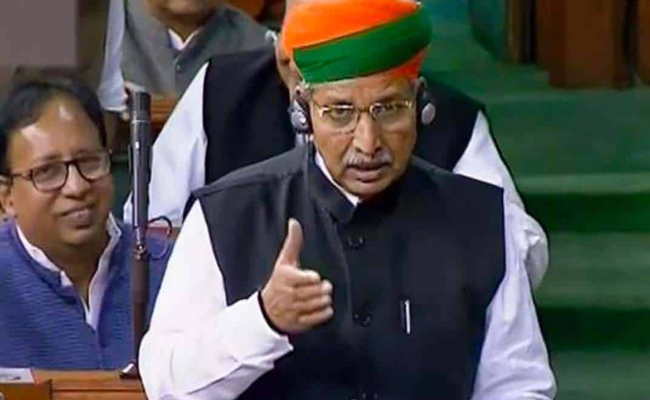
India News

As many as 350 posts of High Court judges, almost a third of the sanctioned 1,114 positions, are lying vacant across the country, with the Allahabad High Court topping the list with 74 vacancies, the Rajya Sabha was informed on Thursday.
Minister of State (Independent charge) of the Ministry of Law and Justice, Arjun Ram Meghwal while replying to a question by Akhilesh Prasad Singh of the Congress, said, “Vacancies of judges in High Courts keep on arising on account of retirement, resignation or elevation of judges and also due to increase in the sanctioned strength of judges.”
Meghwal said since May 2014, the Government has increased the sanctioned strength of High Court judges from 906 to 1,122 (as on date), and 64 judges have been appointed to the Supreme Court and 999 judges have been appointed in various High Courts.
According to data shared in his reply, the minister indicated that the Allahabad High Court has a vacancy of 74 judges against a total sanctioned strength of 160, followed by Punjab and Haryana High Court with 31 vacancies against a total strength of 85 and Bombay High Court with 28 vacancies against a sanctioned strength of 94.
He said one of the reasons for the delay in filling up posts was courts exceeding time limits for recommending new names.
“The High Courts are required to make recommendations at least six months before the occurrence of a vacancy. However, this time limit is rarely observed,” he said.
The official data on vacant posts of judges showed that the situation even in the national Capital is no different from others, with 21 vacancies in Delhi High Court against a sanctioned strength of 60.
The Calcutta High Court has 27 (against the strength of 72), Patna High Court 19 (53), Rajasthan High Court 18 (50), Madhya Pradesh High Court 16 (53) and Telangana 42 (14).
Sharing the procedure for filling up judicial vacancies in High Courts, the Minister of State said, “Appointment of judges to High Courts is made under Articles 217 and 224 of the Constitution of India and according to the procedure laid down in the Memorandum of Procedure (MoP) prepared in 1998, pursuant to the Supreme Court Judgment of October 6, 1993 (Second Judges case) read with their Advisory Opinion of October 28, 1998 (Third Judges case).
“As per the MoP, the responsibility for initiation of proposals for appointment of judges in the Supreme Court vests with the Chief Justice of India, while the responsibility for initiation of proposals for appointment of judges in the High Courts, vests with the Chief Justice of the High Court concerned, in consultation with two senior-most puisne judges of the High Court.
“As per the MoP, the High Courts are required to make recommendations at least six months before the occurrence of a vacancy. However, this time limit is rarely observed,” he said.
Claiming that it was not feasible to indicate the time needed for filling up vacancies of the judges in the higher judiciary, the Minister of State said, “Appointment of judges in the higher judiciary is a continuous, integrated and collaborative process between the executive and the judiciary.
“It requires consultation and approval from various Constitutional Authorities both at the state and Central level. Hence, the time needed for filling up vacancies of judges in the higher judiciary cannot be indicated.”
The official data showed that almost all large states had vacant posts of High Court judges, except three small states like Tripura, Sikkim and Meghalaya which have full sanctioned strength of 5, 3 and 4, respectively.
Advertisment